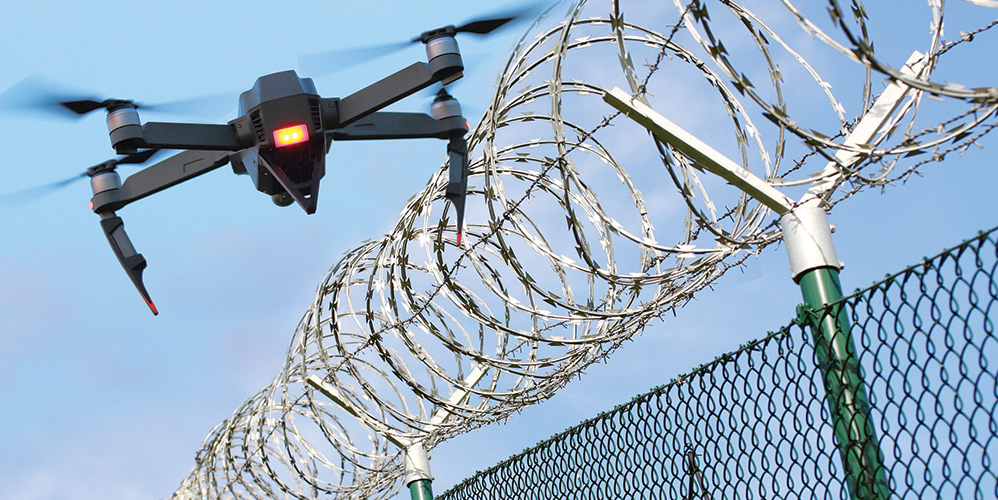
Contextual Fencing
07 अप्रैल 2021

Dear Reader,
From sending a tailored promotion when a customer enters a retail store to powering order-ahead food delivery, geofencing plays a key role in making mobile apps contextually aware. Geofencing is a location-based service in which an app or other software uses GPS, RFID, Wi-Fi or cellular data to trigger a pre-programmed action when a mobile device or RFID tag enters or exits a virtual boundary set up around a geographical location, known as a geofence.
Think about geo-fencing like an electric fence. In the real-world Geo-fencing allows for the setup of virtual fences or areas, wherein the entry and exit through the areas triggers a response or action by the individual or company monitoring the geo-fence. So, geo-fencing triggers alerts for a business owner when key things happen: a customer visits a store, for example, or the store of a competitor.
BMW is an industry leader in the automobile industry. BMW uses geofencing to enhance their customer service. Cars with BMW Trackstar monitor the position of the vehicle. Once a customer activates their service, the position of their car is tracked and pinpointed every 20 seconds. Customers can use their mobile application to track the location of their car if it’s parked in a garage or somewhere on the city streets. That way they never have to worry about forgetting where they parked. Furthermore, this service also helps prevent theft. Geofencing helps them go the extra mile to provide customer service, which is a profitable strategy.
Apple Maps is constantly tracking our location. Based on our habits, this app can predict where one is most likely to go. For example, if you leave work around the same time every day and drive straight home, Apple Maps will recognize this habit. If the app knows that you’re not home, based on being outside of a geofenced area, it will send a push notification informing how long it will take to get home and what the traffic will be like.
Today’s use of geofencing has evolved beyond simply tracking where a target customer is at any given time. With privacy concerns challenging companies to rethink their use of geofencing, companies like Radar are leading the way in innovating how geofences can improve the user experience.
Having data about consumer behavior can be helpful to design better and personalized products. Uber first implemented the geofencing feature to identify airports to notify people in airports about available cabs and special offers on booking.
In the times to come we expect to see companies use geofencing more strategically to send contextually relevant messages.
Credits : Akhil Handa,Prithwijit Ghosh
Popular Articles
Related Articles










-
डिस्क्लेमर
इस लेख/इन्फोग्राफिक/चित्र/वीडियो की सामग्री का उद्देश्य केवल सूचना से है और जरूरी नहीं कि यह बैंक ऑफ बड़ौदा के विचारों को प्रतिबिंबित करे। सामग्री प्रकृति में सामान्य हैं और यह केवल सूचना मात्र है। यह आपकी विशेष परिस्थितियों में विशिष्ट सलाह का विकल्प नहीं होगा । बैंक ऑफ बड़ौदा और/या इसके सहयोगी और इसकी सहायक कंपनियां सटीकता के संबंध में कोई प्रतिनिधित्व नहीं करती हैं; यहां निहित या अन्यथा प्रदान की गई किसी भी जानकारी की पूर्णता या विश्वसनीयता और इसके द्वारा उसी के संबंध में किसी भी दायित्व को अस्वीकार करें। जानकारी अद्यतन, पूर्णता, संशोधन, सत्यापन और संशोधन के अधीन है और यह भौतिक रूप से बदल सकती है। इसकी सूचना किसी भी क्षेत्राधिकार में किसी भी व्यक्ति द्वारा वितरण या उपयोग के लिए अभिप्रेत नहीं है, जहां ऐसा वितरण या उपयोग कानून या विनियमन के विपरीत होगा या बैंक ऑफ बड़ौदा या उसके सहयोगियों को किसी भी लाइसेंसिंग या पंजीकरण आवश्यकताओं के अधीन करेगा । उल्लिखित सामग्री और सूचना के आधार पर किसी भी वित्तीय निर्णय लेने के लिए पाठक द्वारा किए गए किसी भी प्रत्यक्ष/अप्रत्यक्ष नुकसान या देयता के लिए बैंक ऑफ बड़ौदा जिम्मेदार नहीं होगा । कोई भी वित्तीय निर्णय लेने से पहले अपने वित्तीय सलाहकार से सलाह जरूर लें।
Clearing up Space Debris
Dear Reader,
Various entities are putting more and more satellites into Earth’s orbit every year making it extremely crowded with defunct satellites and debris. Scientists around the world are worried about accidental collisions affecting new space missions. Governments and start-ups are now working on numerous ways to fix this humungous mess.
NASA has a special ORBITAL DEBRIS PROGRAM OFFICE according to which more than 23,000 orbital debris larger than 10 cm are known to exist. The estimated population of particles between 1 and 10 cm in diameter is approximately 500,000. The number of particles larger than 1 mm exceeds 100 million. As of January 1, 2020, the quantity of material orbiting the Earth exceeded 8,000 metric tons.
NASA recently gave out a handbook on how to avoid crashes for commercial satellite providers, and this month signed an agreement with SpaceX to ensure that both prioritize safety during launches and orbital manoeuvres.
Astroscale, is a Japanese startup which wants to remove hazardous clutter from an already congested space environment. It has achieved a critical breakthrough with the successful launch of its ELSA-D debris removal spacecraft last week.
Russia’s GK Launch Services sent ELSA-D into space on a Soyuz rocket from the Baikonur Cosmodrome in Kazakhstan. The system works by attempting to attach itself to dead satellites and push them towards the earth for burning up in the atmosphere, using a magnetic docking technology.
Apart from Astroscale, ClearSpace SA, a Switzerland-based startup founded in 2018, is aiming to launch the world’s first active debris removal mission in collaboration with ESA by 2025. The mission’s objective will be to remove a fragment of the Vega rocket launched in 2013. It is a bulky piece, about a hundred kilos and a similar size to many satellites in orbit, which is why it has been selected.
The concept is relatively simple—a vehicle will be launched with several mechanical arms that will trap the piece in orbit. Once captured, a descent manoeuvre will be initiated with which the spacecraft and the piece of junk will disintegrate due to the atmosphere's friction.
In India, young Bengaluru-based space startup, Digantara Research and Technologies, is working towards setting up an orbit rubble tracking and monitoring services.
Another Japanese company - Sumitomo Forestry and Kyoto University have joined forces to develop what they hope will be the world's first satellites made out of wood by 2023. This partnership will begin experimenting with different types of wood in extreme environments on Earth.
These strategies will be critical since, by 2029, there will be an estimated 57,000 satellites in orbit. Fortunately, this time around, we have the knowledge and tools to resolve the situation before the accumulation of space junk becomes unsustainable.
Credits : Akhil Handa,Aparna Anand
Data for all
Dear Reader,
Data is king or so they say. Inclusivity for data platforms can be achieved when data reaches all stakeholders without lag or restrictions. Market information disseminated quickly could make the difference between making and losing money in the financial markets.
Spending on financial market data/analysis and news exceeded the USD 30 billion mark for the first time ever in 2018, according to a new report published by Burton-Taylor International Consulting.
Xignite’s market data cloud is a single platform that unifies financial data consumption. It provides cloud-based financial market data APIs to help emerging companies and established enterprises deliver real-time and reference market data to their digital assets, such as websites and apps. Xignite cloud API’s cover millions of financial instrument across all asset classes.
With all the real time data at hand, investors would like to trade across all asset classes. Robinhood makes it possible to trade in stocks, ETF’s, options and crypto, brokerage free. It also gives access to professional research reports, margin trading and instant deposits. Various other tools and features such as price movement notifications and customized investment news provide additional appeal.
Market Prophit is a financial Big Data analytics company delivering real-time, meaningful intelligence to investors through sophisticated natural language processing, predictive analytics, and powerful visualizations of sentiment and buzz derived from financial related conversations in social media chatter. Market Prophit is the first service ever to provide quantitative rankings of financial bloggers data in social media and generate unique, real-time sentiment signals (bullish/bearish).
Another fintech startup Mindbridge Analytics is using AI and ML to detect anomalous patterns of activities, unintentional errors and intentional financial misstatements in financial datasets. The auditing software will automate ingestion and analysis of data and help accountants identify risk. A risk score is generated for the processed data and will flag transactions that need investigation.
Financial institutions harnessing the power of big data coupled with fintech innovation are leveraging meaningful insights from many disparate data sets. Fintech players have set the ball rolling for financial inclusion. A collaborative approach is the natural next step to accelerate the pace of this process.
Credits : Akhil Handa,Prithwijit Ghosh

